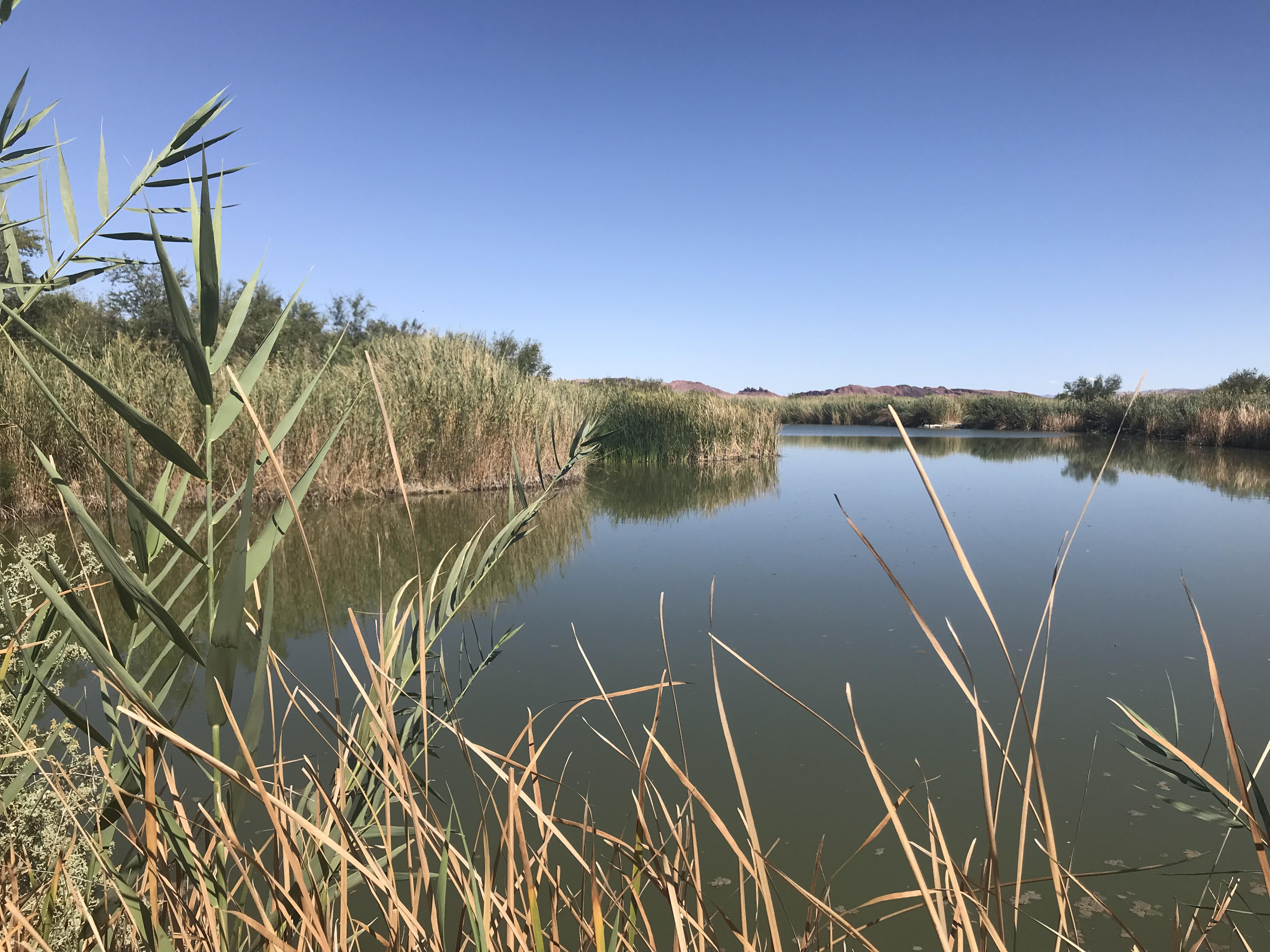
Not many people think of wetlands when they conjure up mental images of Las Vegas. However, Las Vegas literally means “the meadows.” The valley’s grassland were fed by natural springs that rose to the surface through fissures in the bedrock beneath the desert floor. Historically, these springs provided water to a variety of animals, indigenous people as well as settlers migrating west. Despite being overwhelmed by the current population, these springs were the vital resource that allowed settlers to get a toehold in this unforgiving ecosystem. Las Vegas is the only major city in the Mojave Desert — a desert that receives a mere five inches of precipitation per year.
The Sonoran Desert, home to Phoenix and Tucson, receives an additional 10 inches of rain per year. Most of the vegetation people think of as desert plants grows in the Sonoran Desert. Flora like the majestic saguaro cactus or striking ocotillo can’t grow naturally in the Mojave due to the lack of precipitation.
This lack of water has forced local municipalities to be innovative with water conservation and management. Over the past decade the population in Southern Nevada has increased approximately 50% but the per capita water usage has decreased by 38%. Today a mere 10% of the valley’s water supply comes from the ground water — the remaining 90% comes from Lake Mead. Despite being in its back yard, Nevada is not the only state that lays claim to Lake Mead’s water. Nevada receives only 326,000 gallons of water per year from the lake — or 4% of the lake’s total water allocation. Water stored in Lake Mead, fed by the Colorado River, is also shared with Arizona (37%) and California (59%).
The Clark County Wetlands Park, shown here, preserves, enhances and educates the community about this vital natural and cultural resource. The wetlands’ 12-mile flow to Lake Mead today is predominantly fed by more than 180 million gallons of reclaimed water from the valley’s five water treatment plants. Clark County receives additional water credits for each gallon of water fed back into Lake Mead through this system. Twenty-one constructed weirs — or low dams — retain water in various area of this park before reaching the lake. This 1,200-acre park supports a variety of plants and animals including spiny soft shell turtles, coots, beaver, coyotes and dragonflies. Trails through the park were opened to the public in 2001, and construction of a 10,000-square foot educational facility was completed in 2013. Human remains discovered in the park have allowed archeologists to reconstruct a sequence of occupation. It reminds us who came before us and how this wilderness sustains our lives today.

Thanks David for the insight on the wetlands….i will be heading there for sure to check it out…THE SPRING PRESERVE is another educational facility in the heart of Las Vegas that also covers a similar background story on the history of Vegas and local desert fauna….also a house designed for desert living is located on the property…I really appreciate your blog
Thanks Jeffery, FYI The Desert Sol House at Springs was designed and built by UNLV Students for the Solar Decathlon while I was serving as Director of the School. The Faculty member in charge of that project will be lecturing in my class this semester – -Eric Weber. It is a wonderful resource for our community. Thank you for your comment.